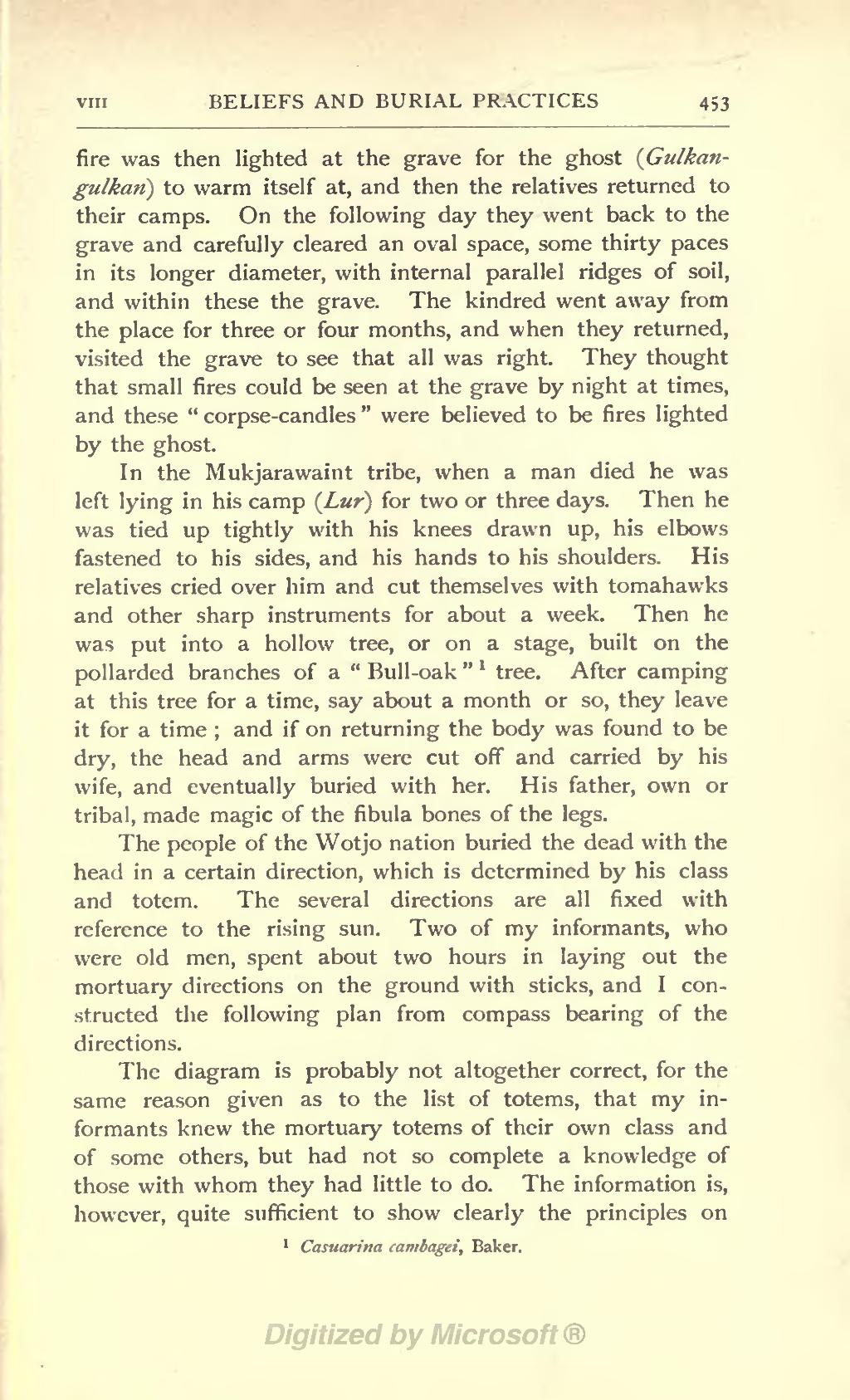fire was then lighted at the grave for the ghost (Gulkan-gulkan) to warm itself at, and then the relatives returned to their camps. On the following day they went back to the grave and carefully cleared an oval space, some thirty paces in its longer diameter, with internal parallel ridges of soil, and within these the grave. The kindred went away from the place for three or four months, and when they returned, visited the grave to see that all was right. They thought that small fires could be seen at the grave by night at times, and these "corpse-candles" were believed to be fires lighted by the ghost.
In the Mukjarawaint tribe, when a man died he was left lying in his camp (Lur) for two or three days. Then he was tied up tightly with his knees drawn up, his elbows fastened to his sides, and his hands to his shoulders. His relatives cried over him and cut themselves with tomahawks and other sharp instruments for about a week. Then he was put into a hollow tree, or on a stage, built on the pollarded branches of a "Bull-oak"[1] tree. After camping at this tree for a time, say about a month or so, they leave it for a time; and if on returning the body was found to be dry, the head and arms were cut off and carried by his wife, and eventually buried with her. His father, own or tribal, made magic of the fibula bones of the legs.
The people of the Wotjo nation buried the dead with the head in a certain direction, which is determined by his class and totem. The several directions are all fixed with reference to the rising sun. Two of my informants, who were old men, spent about two hours in laying out the mortuary directions on the ground with sticks, and I constructed the following plan from compass bearing of the directions.
The diagram is probably not altogether correct, for the same reason given as to the list of totems, that my informants knew the mortuary totems of their own class and of some others, but had not so complete a knowledge of those with whom they had little to do. The information is, however, quite sufficient to show clearly the principles on
- ↑ Casuarina cambagei, Baker.
